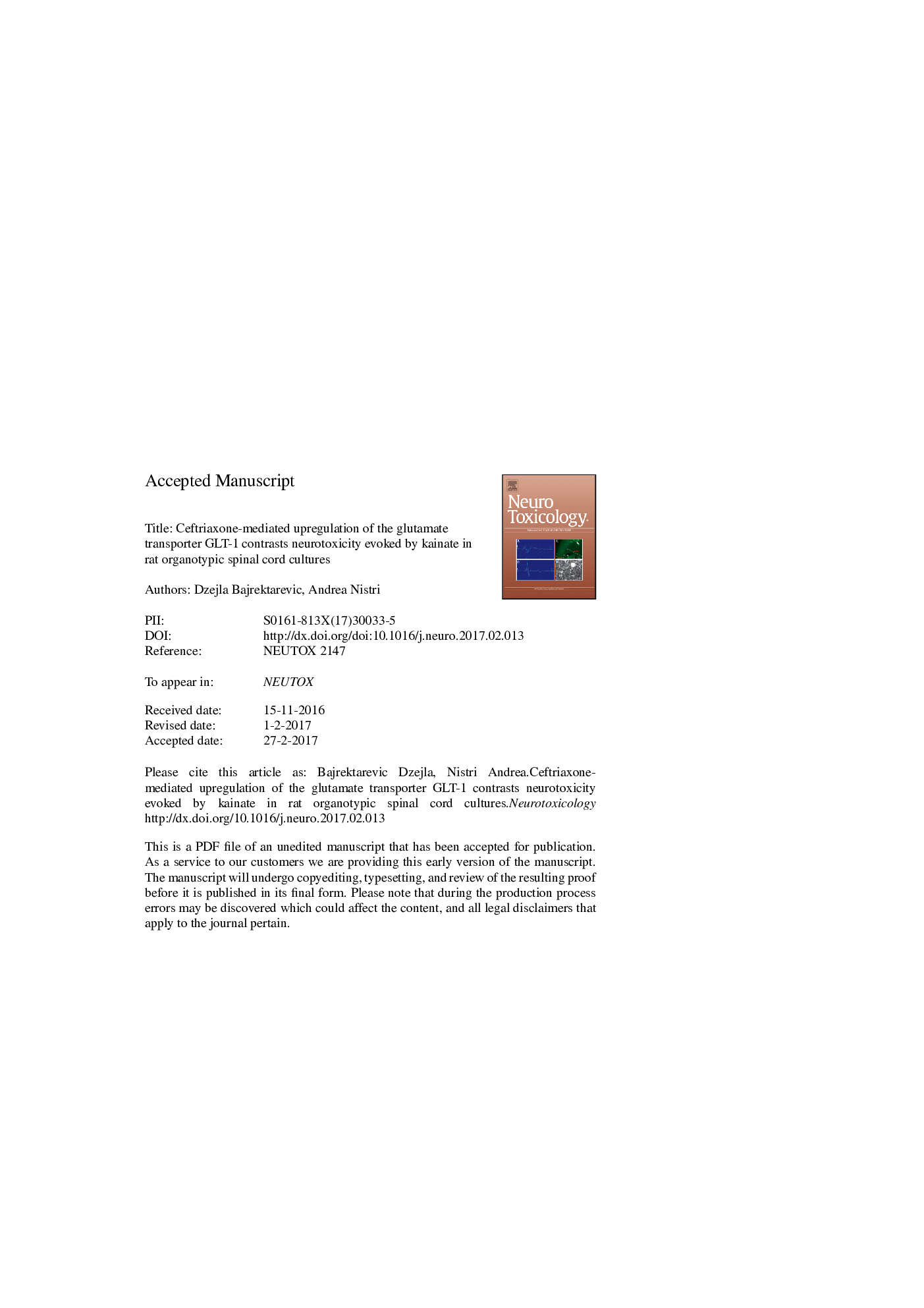| Article ID | Journal | Published Year | Pages | File Type |
|---|---|---|---|---|
| 5560821 | NeuroToxicology | 2017 | 26 Pages |
Abstract
Excitotoxicity is a major pathological trigger of neurodegenerative diseases like amyotrophic lateral sclerosis. This process is caused by excessive release of the transmitter glutamate that overwhelms the capacity of astroglia transporters to maintain a low extracellular level of this aminoacid and strongly stimulates neurons. Using an in vitro model of rat organotypic spinal slice culture, we explored if the excitotoxicity caused by the potent glutamate analogue kainate, widely employed as a paradigm to evoke neurotoxicity in the central nervous system, was prevented by the antibiotic ceftriaxone known to enhance glutamate transporter expression. We also tested if excitotoxicity was made worse by inhibiting glutamate uptake with dl-threo-β-benzyloxyaspartate (TBOA). These experiments were aimed at clarifying the relative contribution to neurotoxicity by kainate-activation of glutamate receptors or kainate-mediated release of glutamate. Neither ceftriaxone nor TBOA alone had adverse effects. Ceftriaxone (10 μM; 3 days) significantly decreased delayed cell death induced by kainate (100 μM; 1 h) and limited neuronal damage especially to motoneurons. This effect was associated to stronger astrocytic immunostaining of the glutamate transporter GLT-1. Conversely, pharmacological inhibition of glutamate uptake with TBOA was per se unable to induce neurotoxicity, yet it intensified cell death evoked by kainate. These data indicate that kainate-mediated glutamate release was critical to damage neurons, an effect prevented by up regulating glutamate uptake. These data suggest that modulating glutamate uptake is an important strategy to preserve neuronal networks.
Related Topics
Life Sciences
Environmental Science
Health, Toxicology and Mutagenesis
Authors
Dzejla Bajrektarevic, Andrea Nistri,
